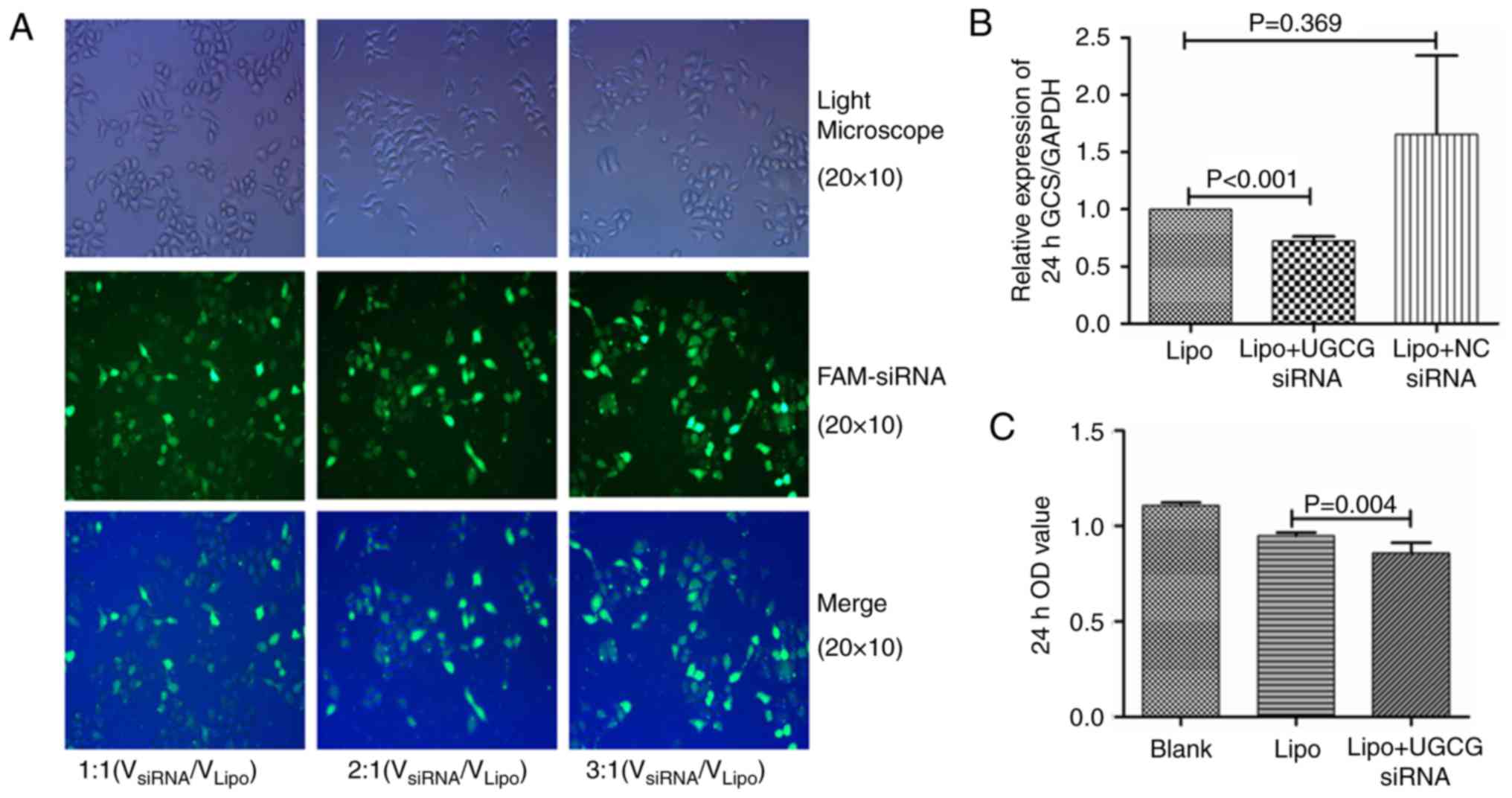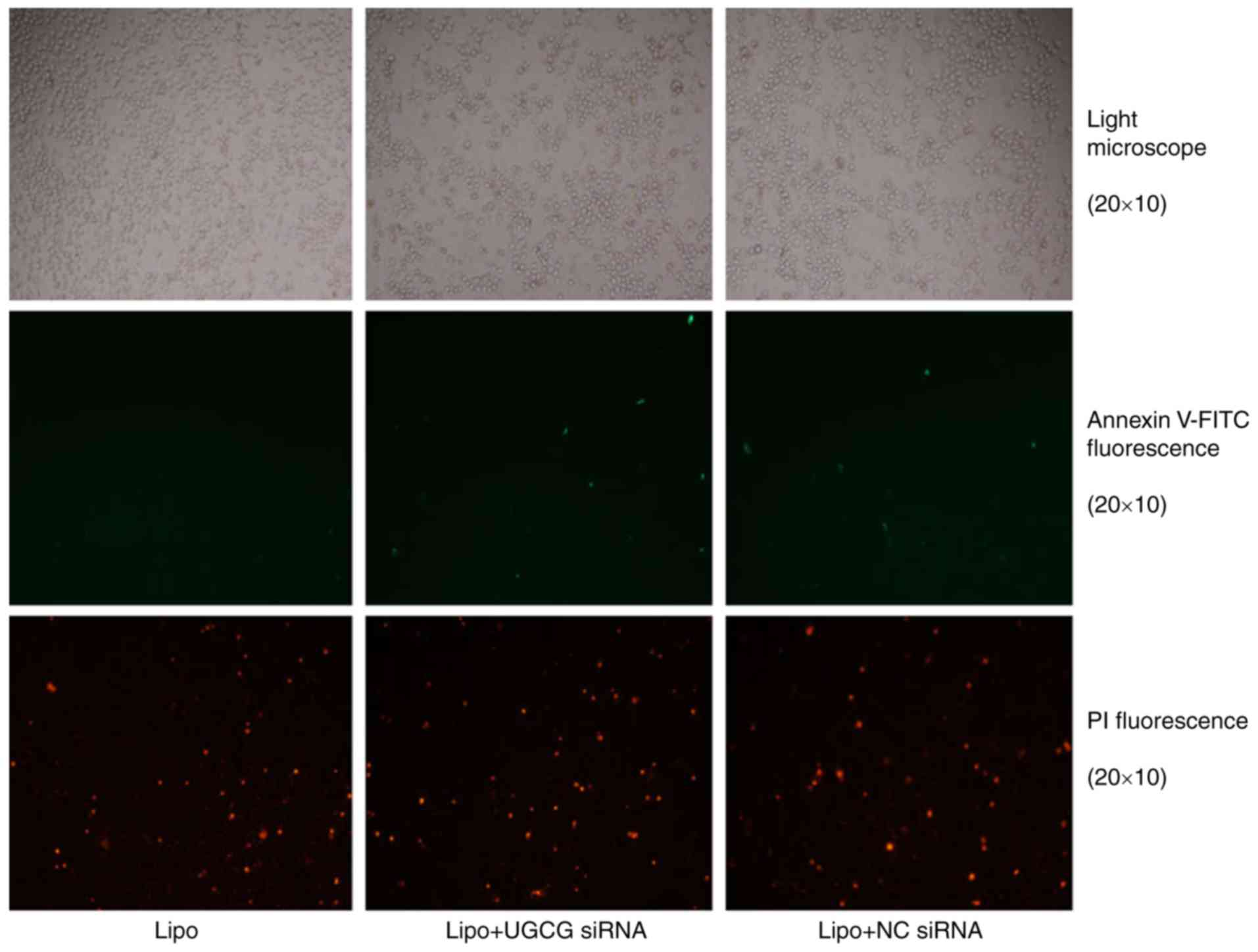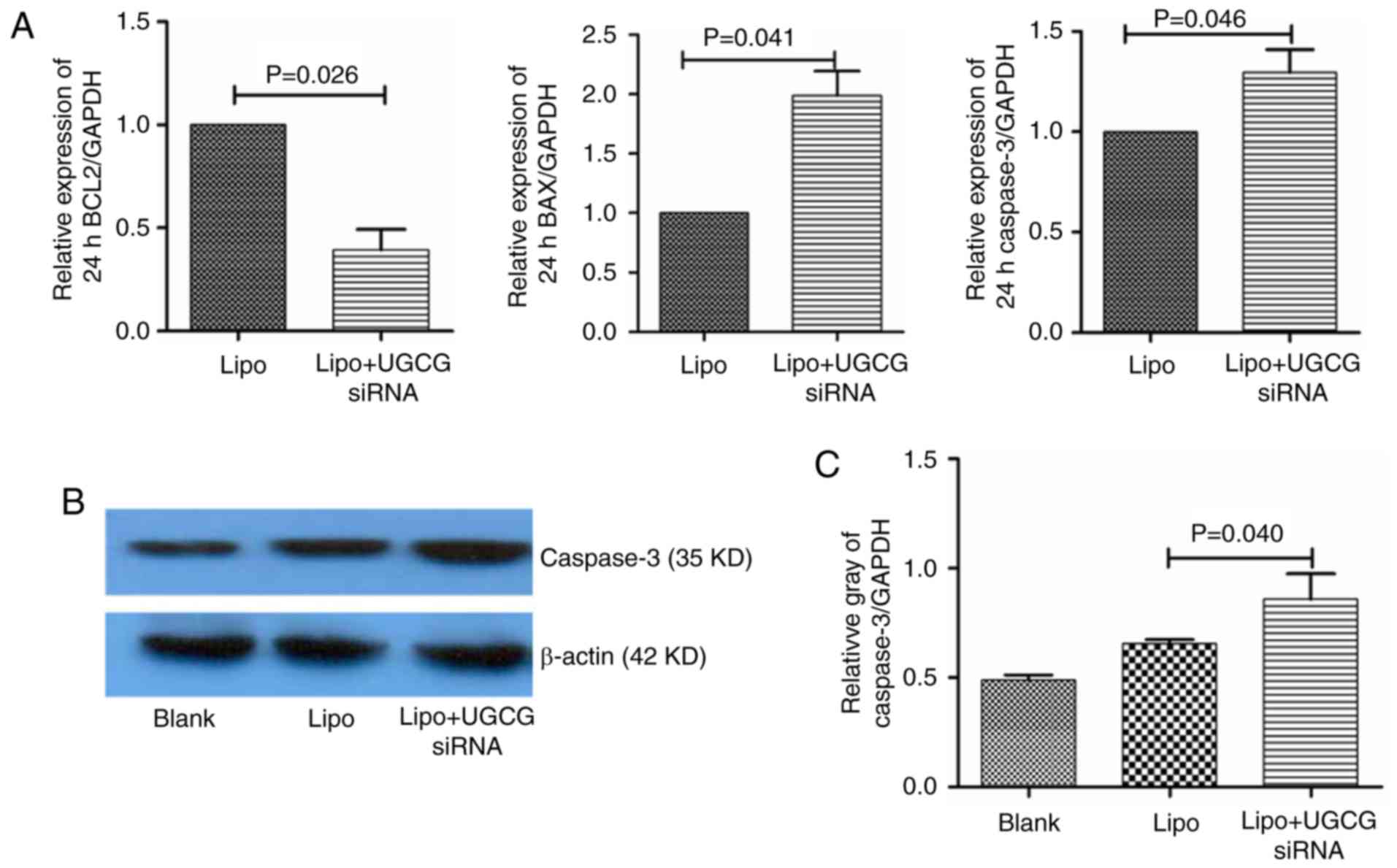|
1
|
Luedde T and Schwabe RF: NF-κB in the
liver-linking injury, fibrosis and hepatocellular carcinoma. Nat
Rev Gastroenterol Hepatol. 8:108–118. 2011. View Article : Google Scholar : PubMed/NCBI
|
|
2
|
Lee YA, Wallace MC and Friedman SL:
Pathobiology of liver fibrosis: A translational success story. Gut.
64:830–841. 2015. View Article : Google Scholar : PubMed/NCBI
|
|
3
|
Heymann F and Tacke F: Immunology in the
liver-from homeostasis to disease. Nat Rev Gastroenterol Hepatol.
13:88–110. 2016. View Article : Google Scholar : PubMed/NCBI
|
|
4
|
Hannun YA and Obeid LM: Principles of
bioactive lipid signalling: Lessons from sphingolipids. Nat Rev Mol
Cell Biol. 9:139–150. 2008. View
Article : Google Scholar : PubMed/NCBI
|
|
5
|
Nojima H, Freeman CM, Gulbins E and
Lentsch AB: Sphingolipids in liver injury, repair and regeneration.
Biol Chem. 396:633–643. 2015. View Article : Google Scholar : PubMed/NCBI
|
|
6
|
Li JF, Qu F, Zheng SJ, Ren JY, Wu HL, Liu
M, Liu H, Ren F, Chen Y, Zhang JL and Duan ZP: Plasma sphingolipids
as potential indicators of hepatic necroinflammation in patients
with chronic hepatitis C and normal alanine aminotransferase level.
PLoS One. 9:e950952014. View Article : Google Scholar : PubMed/NCBI
|
|
7
|
Li JF, Qu F, Zheng SJ, Wu HL, Liu M, Liu
S, Ren Y, Ren F, Chen Y, Duan ZP and Zhang JL: Elevated plasma
sphingomyelin (d18:1/22:0) is closely related to hepatic steatosis
in patients with chronic hepatitis C virus infection. Eur J Clin
Microbiol Infect Dis. 33:1725–1732. 2014. View Article : Google Scholar : PubMed/NCBI
|
|
8
|
Li JF, Qu F, Zheng SJ, Ren F, Wu HL, Liu
M, Ren JY, Chen Y, Duan ZP and Zhang JL: Plasma sphingolipids:
Potential biomarkers for severe hepatic fibrosis in chronic
hepatitis C. Mol Med Rep. 12:323–330. 2015. View Article : Google Scholar : PubMed/NCBI
|
|
9
|
Zheng SJ, Qu F, Li JF, Zhao J, Zhang JY,
Liu M, Ren F, Chen Y, Zhang JL and Duan ZP: Serum sphingomyelin has
potential to reflect hepatic injury in chronic hepatitis B virus
infection. Int J Infect Dis. 33:149–155. 2015. View Article : Google Scholar : PubMed/NCBI
|
|
10
|
Zhang JY, Qu F, Li JF, Liu M, Ren F, Zhang
JY, Bian DD, Chen Y, Duan ZP, Zhang JL and Zheng SJ: Up-regulation
of plasma hexosylceramide (d18:1/18:1) contributes to genotype 2
virus replication in chronic hepatitis C: A 20-year cohort study.
Medicine (Baltimore). 95:e37732016. View Article : Google Scholar : PubMed/NCBI
|
|
11
|
Garcia-Ruiz C, Morales A and
Fernández-Checa JC: Glycosphingolipids and cell death: One aim,
many ways. Apoptosis. 20:607–620. 2015. View Article : Google Scholar : PubMed/NCBI
|
|
12
|
Merrill AH Jr: Sphingolipid and
glycosphingolipid metabolic pathways in the era of
sphingolipidomics. Chem Rev. 111:6387–6422. 2011. View Article : Google Scholar : PubMed/NCBI
|
|
13
|
Liu YY, Hill RA and Li YT: Ceramide
glycosylation catalyzed by glucosylceramide synthase and cancer
drug resistance. Adv Cancer Res. 117:59–89. 2013. View Article : Google Scholar : PubMed/NCBI
|
|
14
|
Haynes CA, Allegood JC, Park H and
Sullards MC: Sphingolipidomics: Methods for the comprehensive
analysis of sphingolipids. J Chromatogr B Analyt Technol Biomed
Life Sci. 877:2696–2708. 2009. View Article : Google Scholar : PubMed/NCBI
|
|
15
|
Morales A, Lee H, Goñi FM, Kolesnick R and
Fernandez-Checa JC: Sphingolipids and cell death. Apoptosis.
12:923–939. 2007. View Article : Google Scholar : PubMed/NCBI
|
|
16
|
Verheij M, Bose R, Lin XH, Yao B, Jarvis
WD, Grant S, Birrer MJ, Szabo E, Zon LI, Kyriakis JM, et al:
Requirement for ceramide-initiated SAPK/JNK signalling in
stress-induced apoptosis. Nature. 380:75–79. 1996. View Article : Google Scholar : PubMed/NCBI
|
|
17
|
Brooks C and Dong Z: Regulation of
mitochondrial morphological dynamics during apoptosis by Bcl-2
family proteins: A key in Bak? Cell Cycle. 6:3043–3047. 2007.
View Article : Google Scholar : PubMed/NCBI
|
|
18
|
Li P, Nijhawan D, Budihardjo I,
Srinivasula SM, Ahmad M, Alnemri ES and Wang X: Cytochrome c and
dATP-dependent formation of Apaf-1/caspase-9 complex initiates an
apoptotic protease cascade. Cell. 91:479–489. 1997. View Article : Google Scholar : PubMed/NCBI
|
|
19
|
Pan G, O'Rourke K and Dixit VM: Caspase-9,
Bcl-XL, and Apaf-1 form a ternary complex. J Biol Chem.
273:5841–5845. 1998. View Article : Google Scholar : PubMed/NCBI
|
|
20
|
Mari M and Fernández-Checa JC:
Sphingolipid signalling and liver diseases. Liver Int. 27:440–450.
2007. View Article : Google Scholar : PubMed/NCBI
|
|
21
|
García-Ruiz C, Colell A, Marí M, Morales
A, Calvo M, Enrich C and Fernández-Checa JC: Defective
TNF-alpha-mediated hepatocellular apoptosis and liver damage in
acidic sphingomyelinase knockout mice. J Clin Invest. 111:197–208.
2003. View
Article : Google Scholar : PubMed/NCBI
|
|
22
|
Elmore S: Apoptosis: A review of
programmed cell death. Toxicol Pathol. 35:495–516. 2007. View Article : Google Scholar : PubMed/NCBI
|
|
23
|
Armstrong JS: Mitochondrial membrane
permeabilization: The sine qua non for cell death. Bioessays.
28:253–260. 2006. View Article : Google Scholar : PubMed/NCBI
|
|
24
|
Nakagawa T, Shimizu S, Watanabe T,
Yamaguchi O, Otsu K, Yamagata H, Inohara H, Kubo T and Tsujimoto Y:
Cyclophilin D-dependent mitochondrial permeability transition
regulates some necrotic but not apoptotic cell death. Nature.
434:652–658. 2005. View Article : Google Scholar : PubMed/NCBI
|
|
25
|
Gogvadze V, Orrenius S and Zhivotovsky B:
Multiple pathways of cytochrome c release from mitochondria in
apoptosis. Biochim Biophys Acta. 1757:639–647. 2006. View Article : Google Scholar : PubMed/NCBI
|













